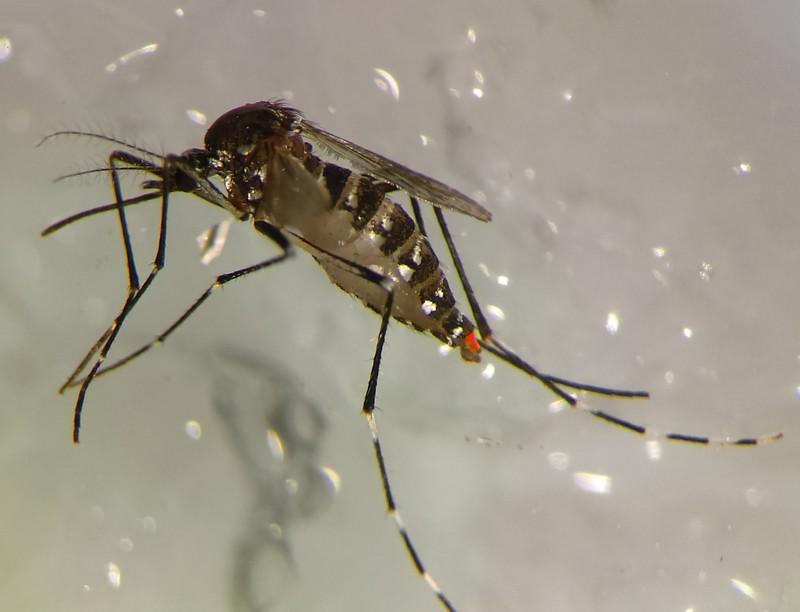Results & impact 28 October 2025
- Home
- CIRAD news
- News
- Boosting the sterile insect technique against mosquitoes
Boosting the sterile insect technique with a biocide increases its efficacy against mosquitoes

The sterile insect technique (SIT) is a biological method involving the mass rearing of a target insect, sterilisation using radiation and then release by air. The sterile males mate with their female counterparts, thereby preventing reproduction and reducing the target insect population. Today, this technique is widely used throughout the world. Developed in the 1950s, it is one of the most environmentally-friendly control methods. Since then it has had many successes. Recently, it has been suggested that the sterile male should be considered not only as a sexual competitor, but especially as a specific carrier of biocides to females, or even to breeding sites in the case of mosquitoes. In a recent article published in Communications Biology, the researchers show that this technique could reduce by more than 95% the total number of sterile male mosquitoes needed to circumvent dengue epidemics. This development would drastically reduce the cost of vector control.
The ERC REVOLINC project
This research was conducted as part of the ERC REVOLINC project, which explores this idea for three main groups of insects, including the mosquito Aedes albopictus, or tiger mosquito, a vector of numerous arboviruses such as dengue, chikungunya and Zika. Different biocides were tested in order to select the most effective, but also the most specific in each group with a view to avoiding any environmental contamination. The preliminary results generated on the transmission of pyriproxyfen* in the laboratory, as well as the integration of data already published, enabled the configuration of models covered in the article in Communications Biology. Eventually, the project team plans to test densoviruses, as extremely specific biopesticides for Aedes albopictus.
The contribution of modelling
The collaboration between entomologists and modellers has made it possible to compare the efficiency of SIT with that of the auto-dissemination of pyriproxyfen and with boosted SIT. Although modelling has demonstrated the importance of associating all three techniques within the framework of integrated vector control, it has also highlighted the groundbreaking nature of boosted TIS. This control method is effective at lower population density thresholds than all other methods.
* Pyriproxyfen is a juvenile hormone analogue that inhibits larvae metamorphosis to adult mosquito.



























